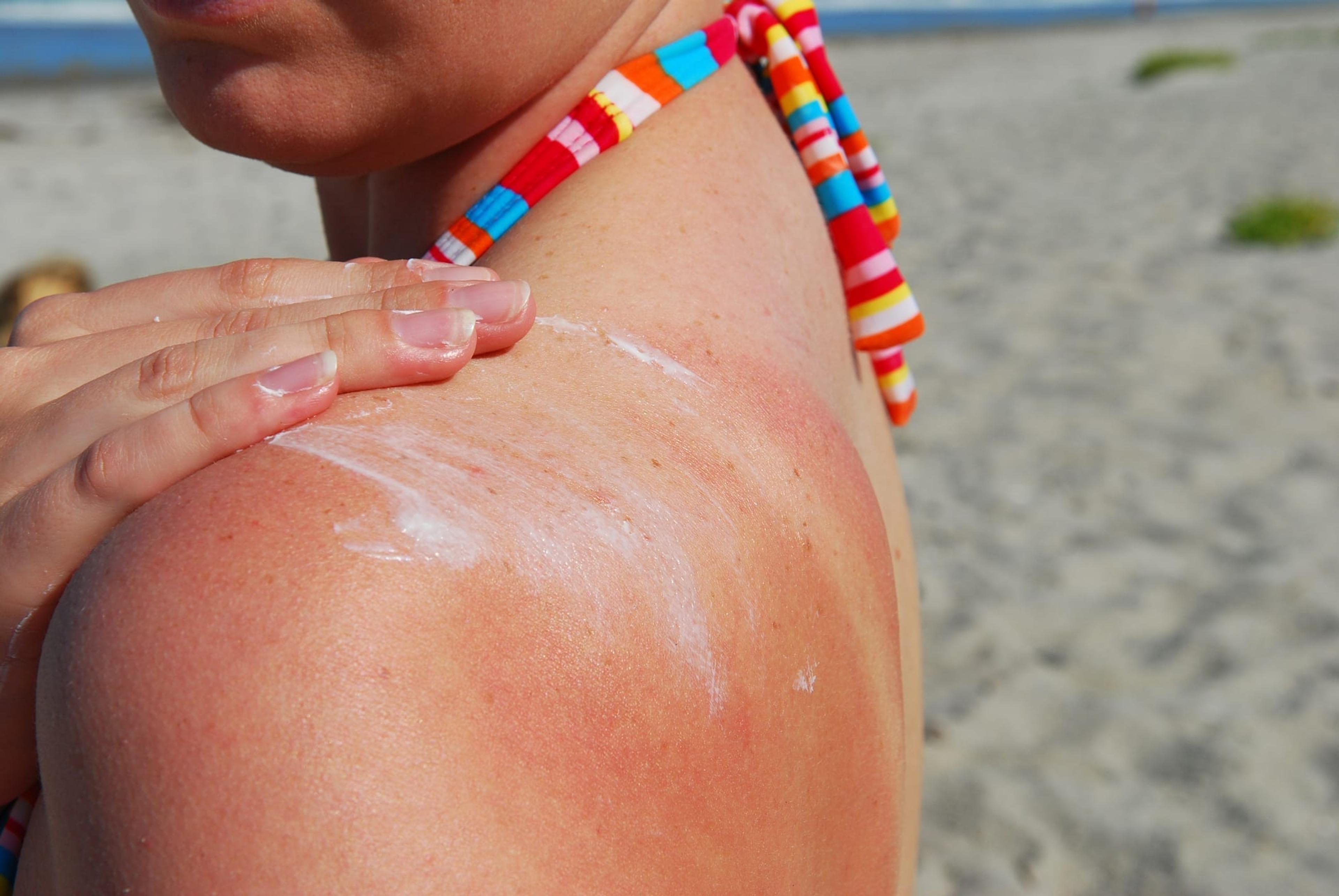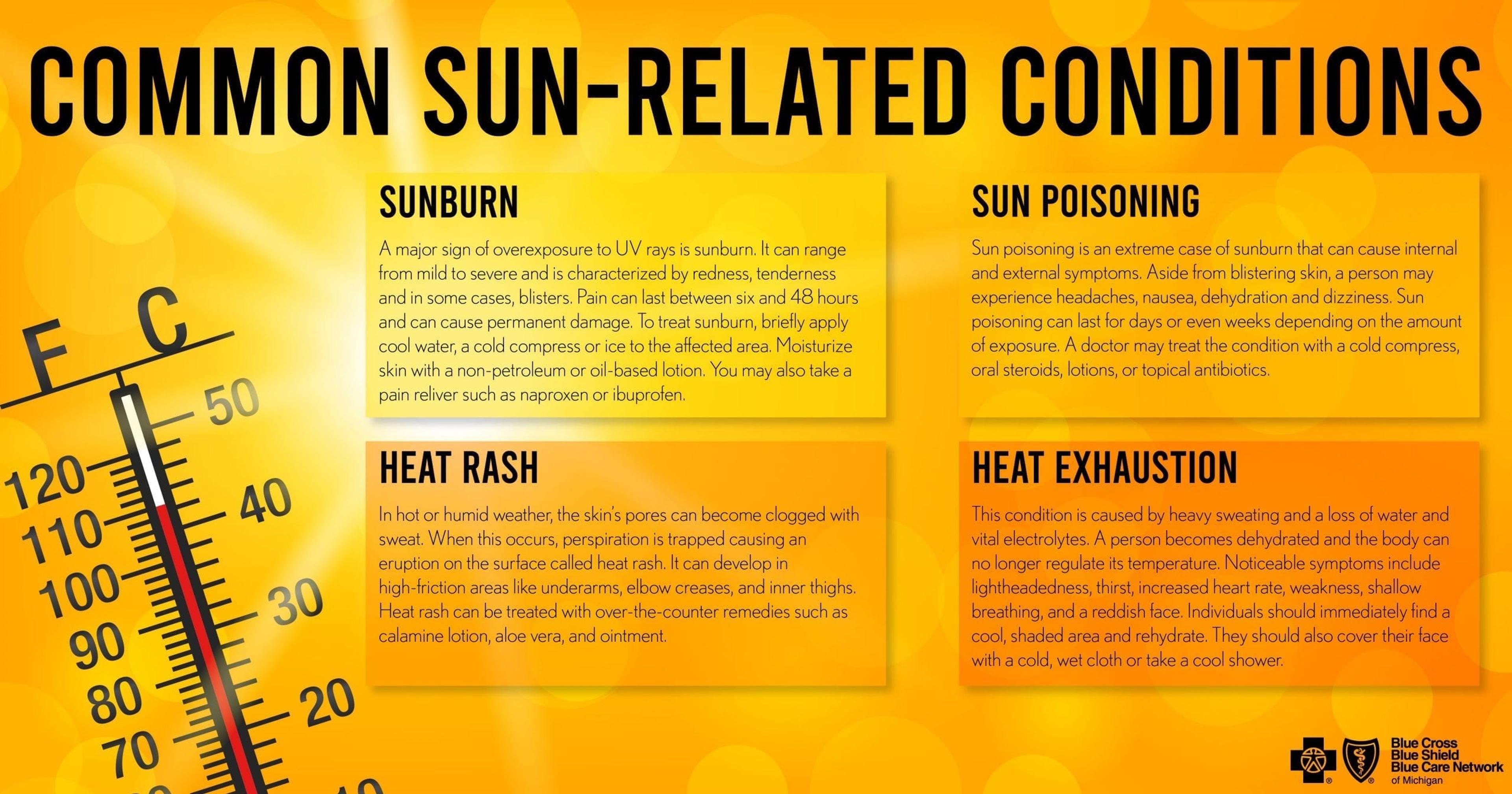Differences Between Sunburn, Sun Poisoning, Heat Rash, Heat Exhaustion

Blues Perspectives
| 2 min read

The summer sun is big and beautiful but it’s also dangerous. It emits powerful ultraviolet radiation that can severely damage one’s skin and hair. Excessive exposure to harmful rays has been linked to multiple illnesses, including cancer. Here are some common sun-related conditions and how to treat them:
Sunburn
A major sign of overexposure to UV rays is sunburn. It can range from mild to severe and is characterized by redness, tenderness and in some cases, blisters. Pain can last between 6 and 48 hours and can cause permanent damage. To treat sunburn, briefly apply cool water, a cold compress or ice to the affected area. Moisturize skin with a non-petroleum or oil-based lotion. You may also take a pain reliver such as naproxen or ibuprofen.
Sun Poisoning
Sun poisoning is an extreme case of sunburn that can cause internal and external symptoms. Aside from blistering skin, a person may experience headaches, nausea, dehydration and dizziness. Sun poisoning can last for days or even weeks depending on the amount of exposure. A doctor may treat the condition with a cold compress, oral steroids, lotions, or topical antibiotics.
Heat Rash
In hot or humid weather, the skin’s pores can become clogged with sweat. When this occurs, perspiration is trapped causing an eruption on the surface called heat rash. It can develop in high-friction areas like underarms, elbow creases, and inner thighs. Heat rash can be treated with over-the-counter remedies such as calamine lotion, aloe vera, and ointment.
Heat Exhaustion
This condition is caused by heavy sweating and a loss of water and vital electrolytes. A person becomes dehydrated and the body can no longer regulate its temperature. Noticeable symptoms include lightheadedness, thirst, increased heart rate, weakness, shallow breathing, and a reddish face. Individuals should immediately find a cool, shaded area and rehydrate. They should also cover their face with a cold, wet cloth or take a cool shower.

It only takes 15 minutes for skin to be damaged by UV radiation. Monitor for pinkish discoloration, as it can be an early sign of sunburn or sun poisoning. Also watch out for fatigue, dizziness, dry mouth and less-frequent urination, which can be symptoms of dehydration or other heat-related illnesses.
Always wear sunscreen--a protective lotion that absorbs and reflects UV rays. For ample coverage, choose broad-spectrum SPF 15 or higher. Remember, sunscreen wears off and must be reapplied every two hours, as well as after swimming, sweating, or towel drying.
Read more:
- Skin Cancer: Start Protecting Yourself Today
- Why Regular Skin Screenings Matter
- How to Stay Safe During a Socially Distant Summer
Photo Credit: Getty Images





